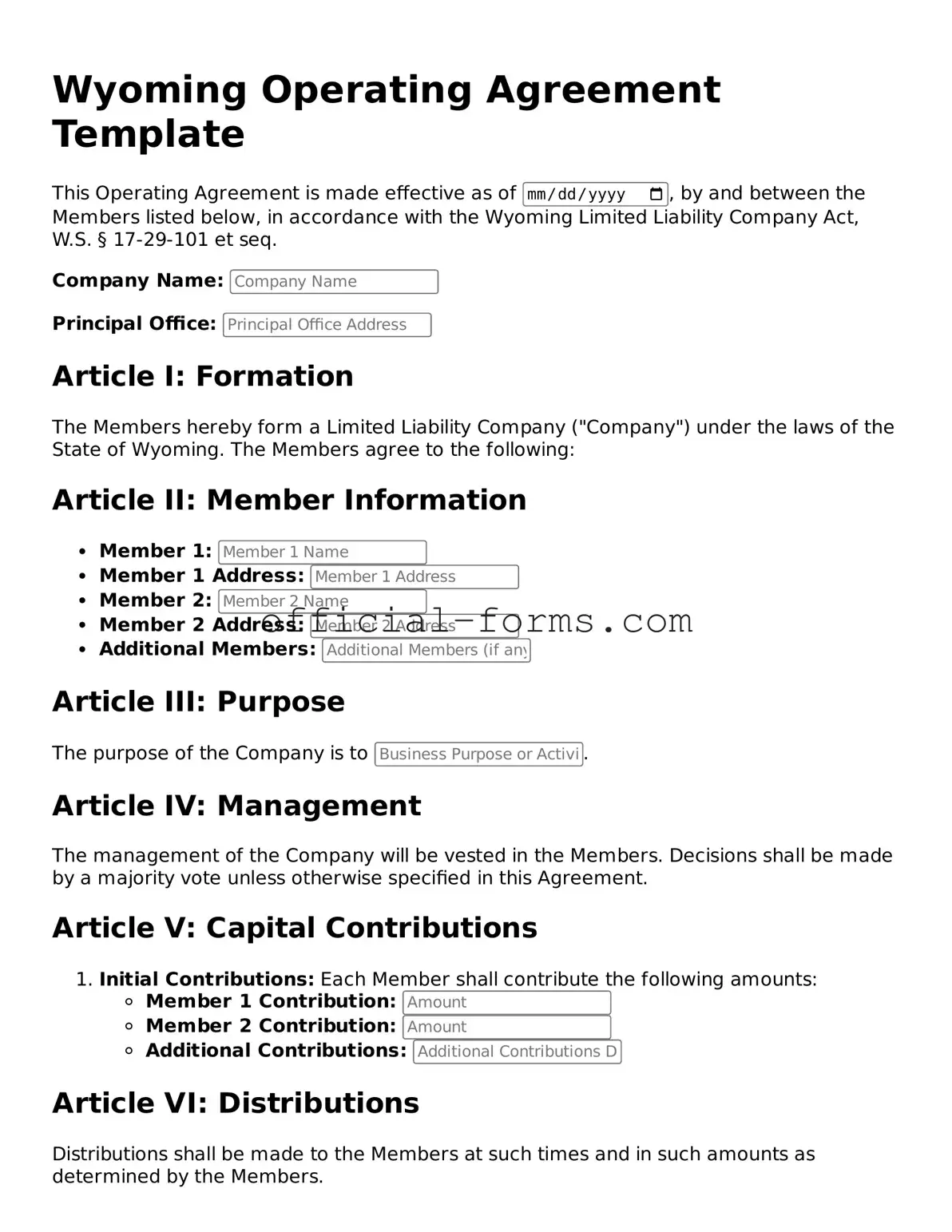Official Wyoming Operating Agreement Document
The Wyoming Operating Agreement is a vital document that outlines the management structure and operational procedures of a limited liability company (LLC) in Wyoming. This agreement serves as a blueprint for how the company will be run, detailing the rights and responsibilities of its members. Understanding its importance can help ensure smooth operations and protect the interests of all parties involved.
Open My Operating Agreement Now
